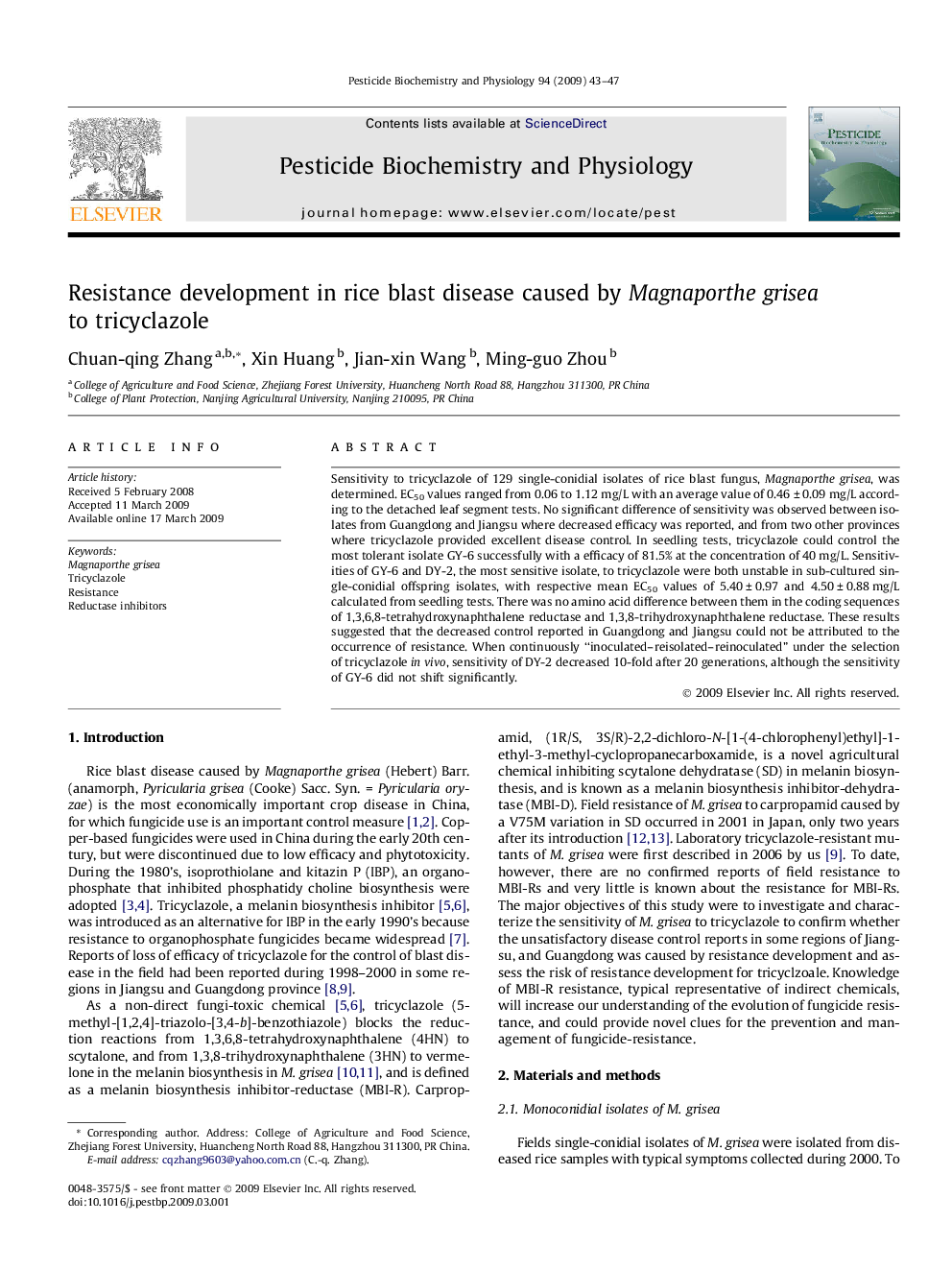| کد مقاله | کد نشریه | سال انتشار | مقاله انگلیسی | نسخه تمام متن |
|---|---|---|---|---|
| 2009920 | 1066696 | 2009 | 5 صفحه PDF | دانلود رایگان |

Sensitivity to tricyclazole of 129 single-conidial isolates of rice blast fungus, Magnaporthe grisea, was determined. EC50 values ranged from 0.06 to 1.12 mg/L with an average value of 0.46 ± 0.09 mg/L according to the detached leaf segment tests. No significant difference of sensitivity was observed between isolates from Guangdong and Jiangsu where decreased efficacy was reported, and from two other provinces where tricyclazole provided excellent disease control. In seedling tests, tricyclazole could control the most tolerant isolate GY-6 successfully with a efficacy of 81.5% at the concentration of 40 mg/L. Sensitivities of GY-6 and DY-2, the most sensitive isolate, to tricyclazole were both unstable in sub-cultured single-conidial offspring isolates, with respective mean EC50 values of 5.40 ± 0.97 and 4.50 ± 0.88 mg/L calculated from seedling tests. There was no amino acid difference between them in the coding sequences of 1,3,6,8-tetrahydroxynaphthalene reductase and 1,3,8-trihydroxynaphthalene reductase. These results suggested that the decreased control reported in Guangdong and Jiangsu could not be attributed to the occurrence of resistance. When continuously “inoculated–reisolated–reinoculated” under the selection of tricyclazole in vivo, sensitivity of DY-2 decreased 10-fold after 20 generations, although the sensitivity of GY-6 did not shift significantly.
Journal: Pesticide Biochemistry and Physiology - Volume 94, Issue 1, May 2009, Pages 43–47